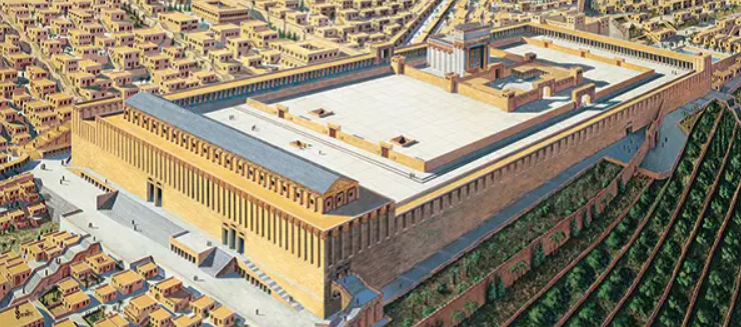
The Jerusalem Temple was central to Jewish religious practice for a millennium. It continues to play an important role in the religious imagination of both Jews and Christians, even though the building itself was permanently destroyed in the year 70 C.E. The Temple existed in several iterations over the centuries. Its last renovation occurred under the auspices of Herod the Great c. 29 B.C.E. and was the most magnificent version of the Jerusalem Temple ever built. This was the Temple that existed during the lifetimes of revolutionary figures like Judas of Galilee, Theudas, Simon of Peraea (leaders of Judeah’s revolt against Rome); the Jewish founders of Christianity, including Jesus and his disciples; and Jewish scholars and historians such as Philo and Josephus.
Unfortunately, the Temple was destroyed by the Romans in 70 C.E. The only remnants to survive are part of the Temple Mount: the level platform that allowed a temple to be built on a mountain. Although the Temple plays a significant role in contemporary religious belief and practice for both Jews and Christians, it is often poorly understood. After all, it is difficult to adequately imagine something from such a different time and place when not even ruins remain. This website provides resources for better visualizing and understanding the Temple as it existed in the early first century C.E. In addition to historical information, a 3D model of the Herodian Temple provides deeper insight into this pivotal period for Judeo-Christian traditions. These resources may provide valuable context to people today who are seeking a deeper understanding of their faith, history, and traditions.